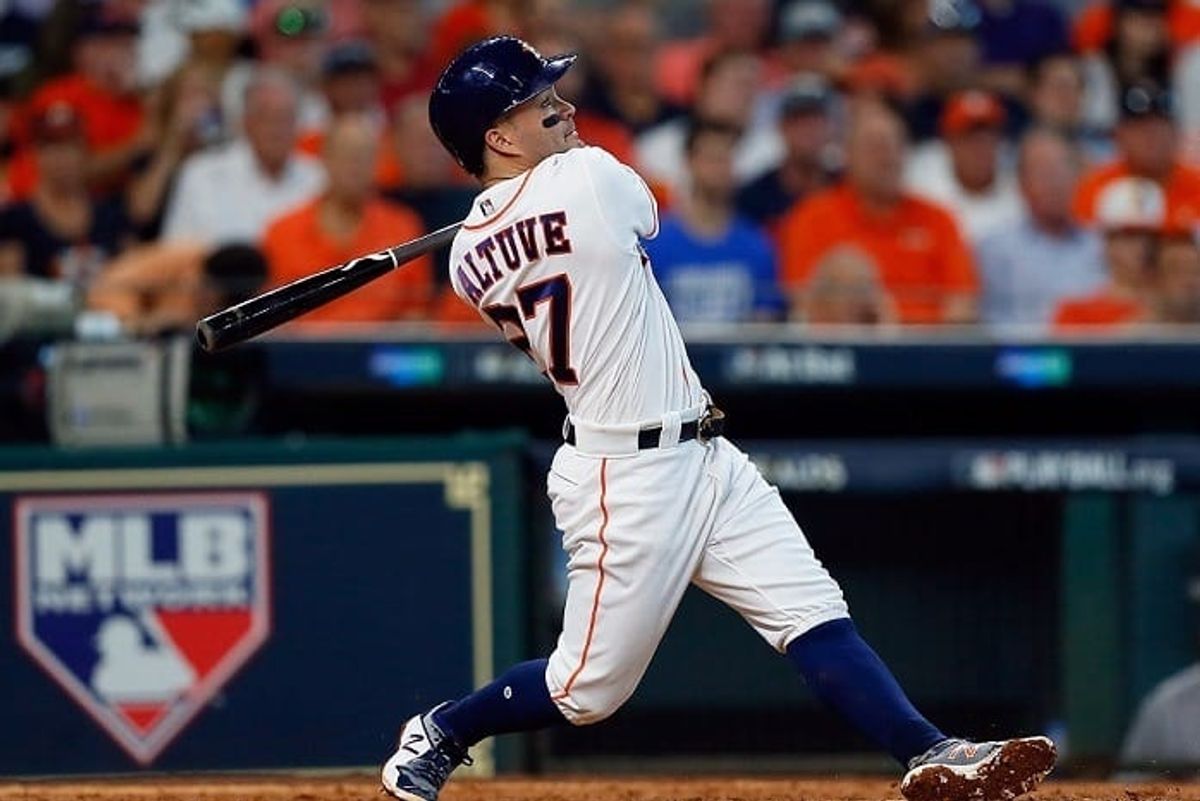UNDER THE MICROSCOPE
How the analytics paint a clear picture of why Jose Altuve is struggling
Aug 14, 2020, 11:35 am
UNDER THE MICROSCOPE

The face of the Houston Astros has struggled to start 2020. Jose Altuve is slashing .187/.265/.333. That's...well...not good. No, the struggles aren't because of trash cans or buzzers. It also isn't because of mechanics. Altuve's swing looks the same this year as it has since 2016, the first year he made significant swing changes compared to when he first got called up to the big leagues. Altuve's struggles this season are most directly attributable to issues in approach and plate discipline. This likely stems from some internal pressure to succeed, but nobody really knows the answer to that other than Altuve himself.
Altuve has always had elite bat-to-ball skills. He has a career contact % of 86% (this is buoyed a bit by the few seasons at the beginning of his career). Altuve's contact % has actually gotten worse every year since 2014, which is also around the time Altuve started to overhaul his swing to drive the baseball more, so he was okay with the extra bit of swing-and-miss. Altuve's contact % so far in 2020 is 78.6%, which is actually rather pedestrian.
Why is there so much more swing-and-miss in Altuve's game? It mostly has to do with plate discipline. Altuve's chase % is up over 3% from the last three seasons, meaning he's swinging at a lot more baseballs outside the strike zone. Conversely, his Z-Swing %, which is his swing percentage at pitches in the strike zone, is 3.5% worse than last season and 3% worse than his career mark. So, Altuve is swinging at pitches in the strike zone considerably less and pitches out of the strike zone considerably more. That isn't a recipe for success. What are the results?
Altuve's O-Contact %, which is his contact rate on pitches outside the strike zone, is 8% worse than it was last season, and 13% worse than his career mark. That is MASSIVE. While he has a reputation as a bad ball hitter, he's getting worse and worse at bad ball hitting. Damage is done on pitches in the zone, even for someone with the reputation of having elite bat-to-ball skills.
Within the zone, Altuve is just fine. His Z-Contact % is 90%, which is 3% better than last year. So, it isn't that Altuve is aging and can't catch up to pitches in the zone, or that he can't hit now that he doesn't know what's coming, it's that his pitch selection is worse, and that's probably because he's trying to be the hero.
Altuve just needs to start being a little bit more selective, hunting for pitches he can drive, and then Astros fans will start seeing the Jose Altuve of old.
Oswald Peraza hit a two-run single in the ninth inning to help the Los Angeles Angels snap a three-game losing skid by beating the Houston Astros 4-1 on Saturday night.
Peraza entered the game as a defensive replacement in the seventh inning and hit a bases-loaded fly ball to deep right field that eluded the outstretched glove of Cam Smith. It was the fourth straight hit off Astros closer Bryan Abreu (3-4), who had not allowed a run in his previous 12 appearances.
The Angels third run of the ninth inning scored when Mike Trout walked with the bases loaded.
Kyle Hendricks allowed one run while scattering seven hits over six innings. He held the Astros to 1 for 8 with runners in scoring position, the one hit coming on Jesús Sánchez’s third-inning infield single that scored Jeremy Peña.
Reid Detmers worked around a leadoff walk to keep the Astros scoreless in the seventh, and José Fermin (3-2) retired the side in order in the eighth before Kenley Jansen worked a scoreless ninth to earn his 24th save.
Houston’s Spencer Arrighetti struck out a season-high eight batters over 6 1/3 innings. The only hit he allowed was Zach Neto’s third-inning solo home run.
Yordan Alvarez had two hits for the Astros, who remained three games ahead of Seattle for first place in the AL West.
Peraza’s two-run single to deep right field that broke a 1-1 tie in the ninth.
Opponents were 5 for 44 against Abreu in August before he allowed four straight hits in the ninth.
Astros RHP Hunter Brown (10-6, 2.37 ERA) faces RHP José Soriano (9-9, 3.85) when the series continues Sunday.
